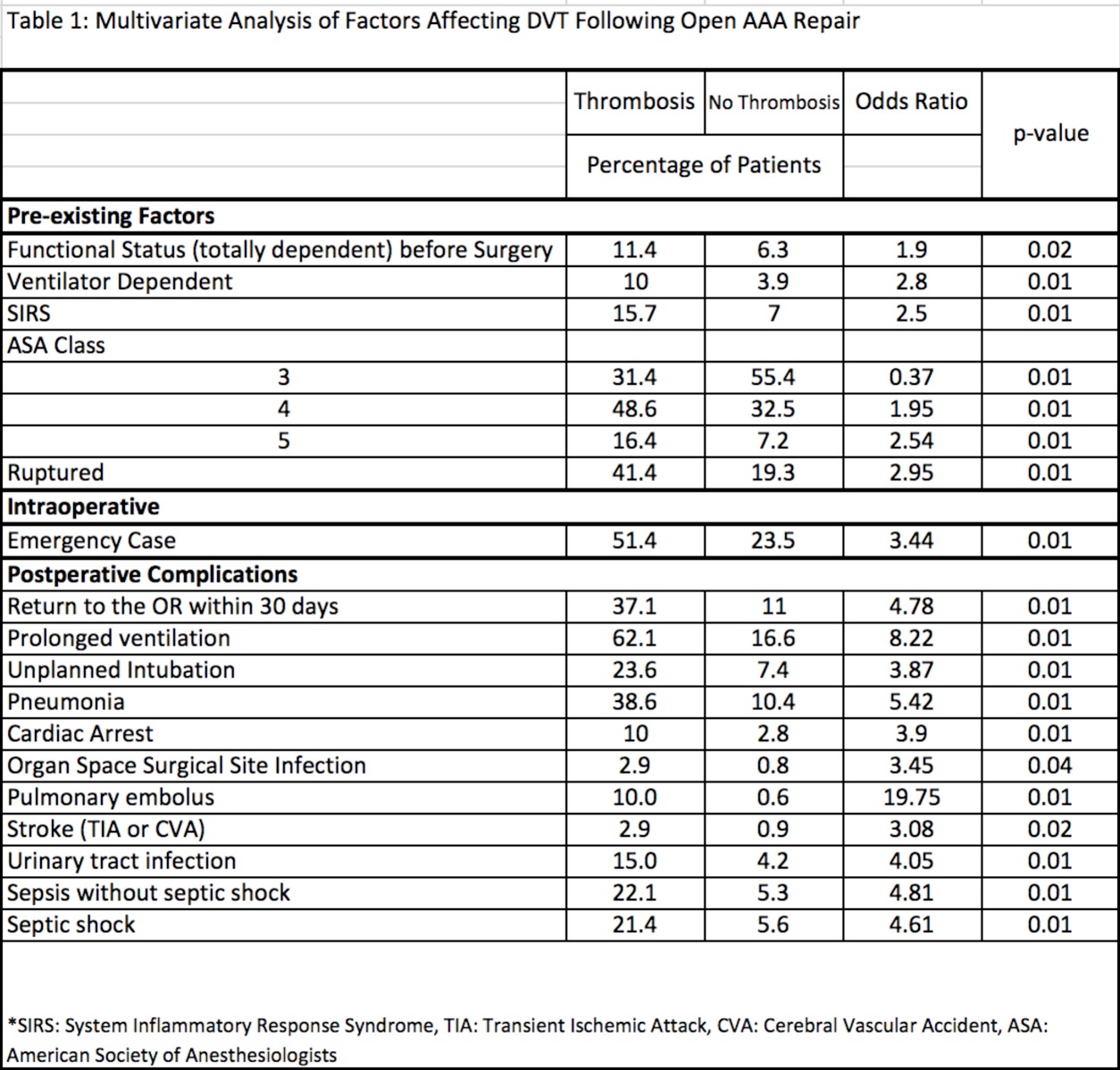|
Back to 2016 Annual Symposium ePosters
Type of Repair Affects The Rate of Deep Vein Thrombosis in Patients Undergoing Treatment of Abdominal Aortic Aneurysm
Matthew D'Alessandro, DO, Arthelma C. Tyson, MD, Saqib Zia, MD, Kuldeep Singh, MD, Jonathan Schor, MD, Jonathan Deitch, MD.
Staten Island University Hospital, Staten Island, NY, USA.
OBJECTIVES:
We compared the incidence of deep venous thrombosis (DVT) in patients who underwent Endovascular aortic aneurysm repair (EVAR) to those who underwent Open repair (OAR) and the factors contributing to their occurrence.
METHODS:
We reviewed all elective EVAR and OAR reported to the American College of Surgeons National Surgical Quality Improvement Program (NSQIP) from 2005 to 2011. All patients with a concomitant DVT were identified. Demographics, procedural characteristics, and postoperative complications were reviewed. The patients were divided into “EVAR” and “Open” subgroups. Predictors for development of DVT were identified by multivariate analysis.
RESULTS:
There were 17,046 patients in the EVAR group and 5,706 in the Open group. The EVAR group had 90 patients with a DVT, while the Open group had 74 with DVT. Patients with concomitant diagnosis of neoplasm were excluded due to the known hypercoaguable state. The difference in DVT rates between EVAR and Open (0.5% vs 1.3%) was statistically significant (p < 0.0001). Postoperative factors that were associated with thrombosis in the open group (Table 1) included prolonged mechanical ventilation greater than 48 hours (47.3% vs 13.3%, p=0.0001), unplanned intubation (21.6% vs 6.7%, p=0.01), development pneumonia (25.7 vs 5.6%, p=0.0007), myocardial infarction (5.4% vs 0%, p=0.03), presence of bleeding that required transfusion (27% vs 13.%, p=0.05), presence of sepsis (20.3% vs 4.4%, p=0.004) and septic shock (16.2% vs 5.6%, p=0.05). American Society of Anesthesiologists (ASA) classification of 3 was associated with a significantly lower rate of DVT, while class 4 and 5 were associated with significantly higher rate in both groups. Multivariate analysis revealed that preoperative hypertension, septic shock, pre and postoperative transfusion, postoperative acute renal failure, graft failure, superficial and deep surgical site infections were all risk factors for development of DVT in the EVAR group.
CONCLUSIONS:
A significantly higher rate of DVT was observed for patients undergoing open aneurysm repair compared to EVAR. Lower ASA class appears to have a protective effect while prolonged hospitalization, higher ASA class, and complicated post-operative course increase the risk of DVT. 
Back to 2016 Annual Symposium ePosters
|







